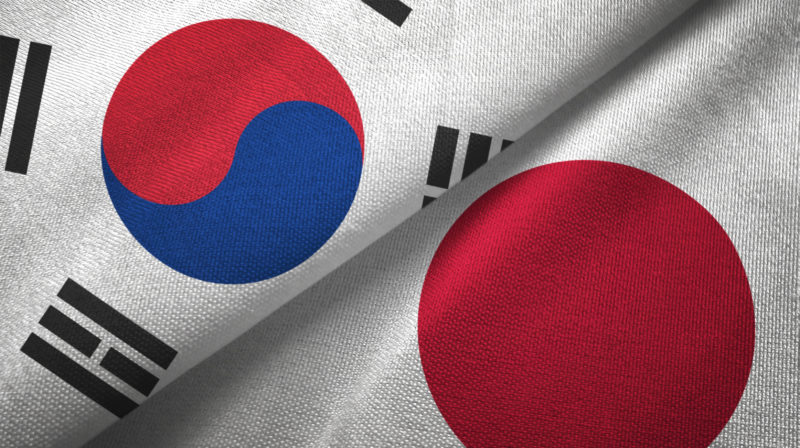Should I Learn Korean or Japanese?
Korean and Japanese are both great languages. So, when you’re trying to decide whether you should learn Korean or Japanese, you face a hard choice. After all, if you’re spending time on learning a foreign language, you need to be sure that you’re learning the right one for you. That means understanding the pros and cons of each language and what you stand to gain from reaching fluency in one over the other. Here is some useful information to help you decide which language is best for you.
Is Japanese or Korean More Used?
Japan has a larger economy and a population of 127 million people speaking the Japanese language. The combined population of North and South Korea totals about 75 million people. (Yes, I know you probably don’t have travel plans to North Korea. But it’s important to know.) South Korea, even with its much smaller population, still has a powerful economy with a wide reach. This is especially true when it comes to entertainment and beauty products which have become popular across the globe.

Is Korean or Japanese Harder to Learn?
Of course, there’s no measure for which language is harder to learn. Just like no one can honestly tell you how long it takes to learn a language. There are too many variables. These all depend on your native tongue, how close it is to your target language, and what kind of learner you are.
But, we can offer some estimates if you’re a native English speaker. The U.S. State’s Department’s Foreign Service Institute lists them both as Category IV languages. This is the highest level of difficulty for native English speakers to master. At this level, it would take at least 88 weeks, or 2200 class hours, to gain proficiency with either language.
Whether you’re studying Korean or Japanese, you’ll sign up for quite a ride. But, the ability to communicate in a foreign language makes it worth it. This highly rewarding experience enriches your life and makes your resume look very impressive.
What’s the Difference Between Korean and Japanese?
If you’re trying to decide if you should study Korean or Japanese, you should know the basic differences between the two languages. Despite what many people might originally believe…they don’t have that much in common.
Although Japan and Korea are only 587 miles (945 km) away from each other, the two languages are vastly different. The sounds, writing, and culture all differ. The big one people seem to think connects the two is that they both have unique scripts. The Korean alphabet is Hangul, and the Japanese alphabet is Kanji. Both sets of writing are very different from one another. Don’t expect learning one will make learning the other easier. It won’t. Also, the two languages also don’t share any cognates, or loanwords, in their vocabularies. (Although, they do have a lot of common share words from Chinese).
That being said, there are some similarities. Mainly, Japanese grammar and Korean grammar are similar. They also follow the Subject-Object-Verb (SOV) sentence structure. And they both have particles in everyday speech. They both have counter words you’ll need to learn if you’re going to count in either language properly.
Are Japanese and Korean Mutually Intelligible?
No. Korean and Japanese are not mutually intelligible languages. If a Korean person would travel to Japan, they couldn’t communicate with Japanese people using Korean. There aren’t enough similarities to even guess the meaning from context. This means that learning Japanese and Korean at the same time is possible.
However, we wouldn’t recommend it. Since both languages have different writing systems, committing all the various characters to memory can be a difficult process. And that difficulty can rapidly increase the time it takes you to reach fluency in both.

Is Japanese or Korean Easier to Learn?
Again, you’ll always face the same problem when trying to determine a language’s true “difficulty”. The truth is that a language’s difficulty is subjective to the learner. We can’t offer you an ultimate ranking or specific advice. But, perhaps these facts will help you decide whether you should learn Korean or Japanese:
- Korean isn’t a tonal language. Unlike other East-Asian languages, Korean isn’t a tonal language. This means, that the meaning of the word doesn’t change, regardless of what your accent is like. This makes learning Korean much easier than Japanese.
- Japanese has 46 letters in its alphabet. Meanwhile, Korean only has 24. If you’re looking for which is easier to learn between Korean or Japanese, Korean wins this round too.
- There are more sounds in Korean. The sounds in the Korean language (with the exception of the /z/ consonant) are a superset of the sounds in Japanese. This means that when you learn Korean, you end up learning most of the Japanese sounds, plus additional ones. But the difference between those sounds can be extremely difficult to distinguish. This puts a notch in the “Japanese is easier” column.
Korean vs. Japanese Writing Style
There are four domains to every language: speaking, listening, reading, and of course, writing. And while Korean and Japanese look similar to those who are quite unfamiliar with either language, nothing could be further from the truth. Here’s how writing differs between the two languages:
Korean Writing
The Korean alphabet and writing system is called Hangul. It’s one of the most logical writing systems in the world. In fact, you can master Hangul in 20 minutes. That’s because it was created for people to learn quickly. And you can fast-track your Hangul studies by learning the vowel and consonants separately. This method is called chunking. We highly recommend it.
Hangul has 19 consonants and 21 vowels. Although, not all of these are completely unique. Double consonants and vowel-variations make learning these much easier.
Writing in Korean is also quite simple. Korean characters are syllables. And you can create them like Legos or building blocks. You stack Hangul letters to create sounds. So, it’s easy to learn and practice Korean writing.
Japanese Writing
Kanji is the Japanese language written in Chinese characters. Its Korean equivalent is Hanja. If you learn Japanese, you’ll need to learn Kanji if you want to be able to, you know, read. That’s a pretty big deal. Books, signs, restaurant menus, computers, all have Kanji in them. In Korea, you don’t need to learn Chinese characters at all.
The Japanese language has 92 characters for you to memorize (46 each in Katakana and Hiragana). If you count the voiced consonants, small 「や、ゆ、よ」, etc., you arrive at 102 sounds for learning those 92 characters.
In Japanese, because there are only five vowels (with the only exception of 「ん」), a lot of words end up with the same pronunciation. For instance, 「生」 and 「正」 are both 「せい」 in Japanese. The original Chinese pronunciation for 生 is “sheng” and “zheng” for 正. In Korean 「生」 is “생” (seng) and “정” (juhng). Japanese doesn’t have an “uh” or “ng” sound.

Learn Korean or Japanese Fast and Effectively
Whether you decide to learn Japanese or Korean, you’ll soon find out how great speaking a second language can be. And OptiLingo can get you to fluency fast with both languages.
OptiLingo is a convenient language learning app that brings you results. Regardless of which language you go with, you need reliable materials. You need to hear and speak high-frequency phrases in both languages. That’s the only way you’ll truly learn to speak like a local. See for the basic differences between Japanese and Korean for yourself. Try FREE today!







